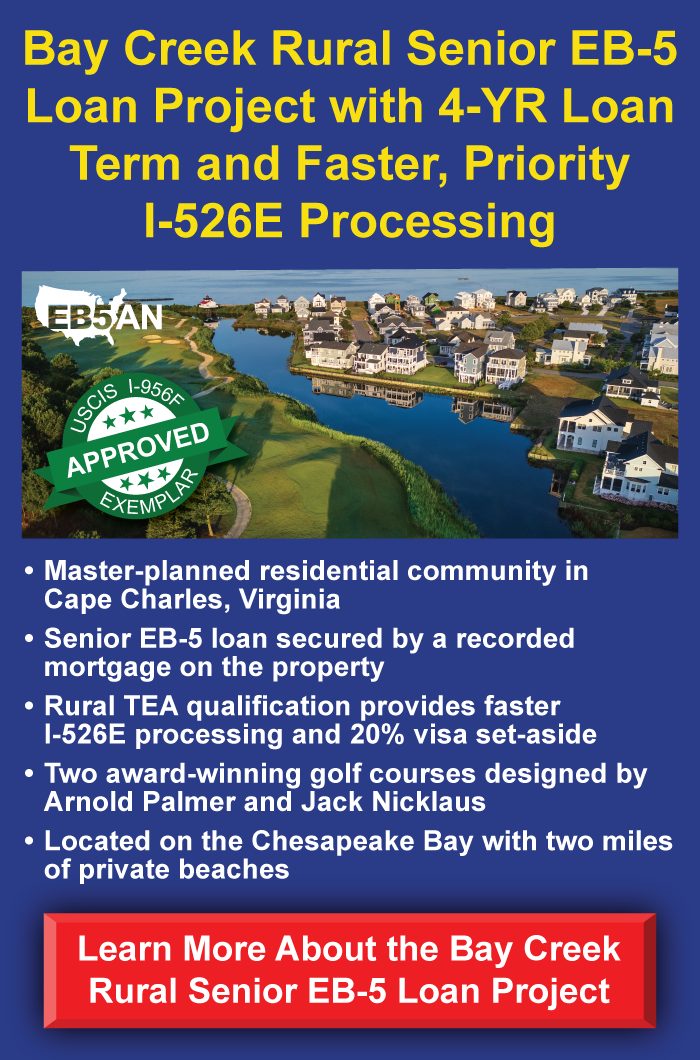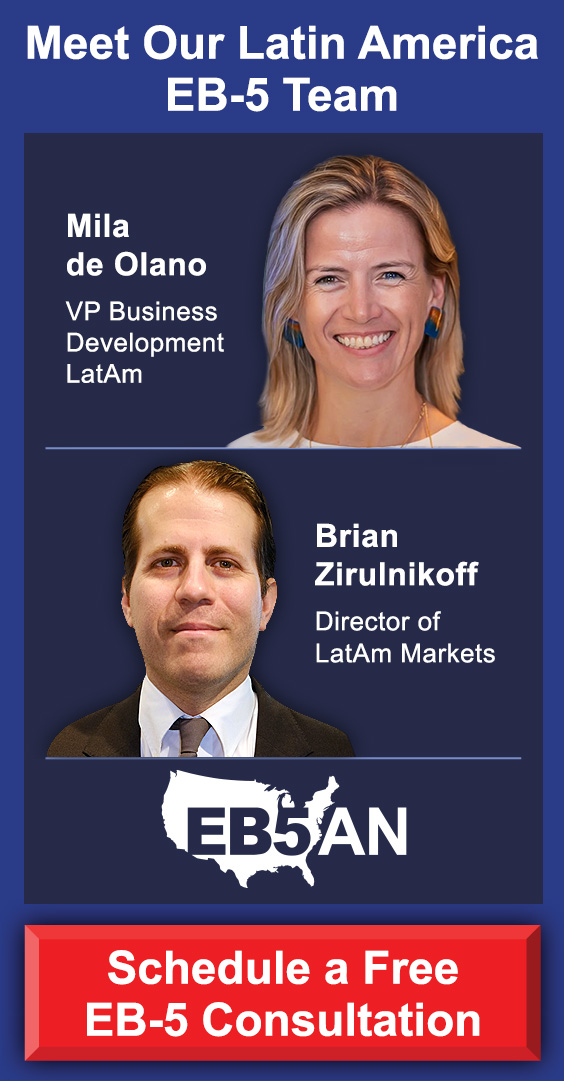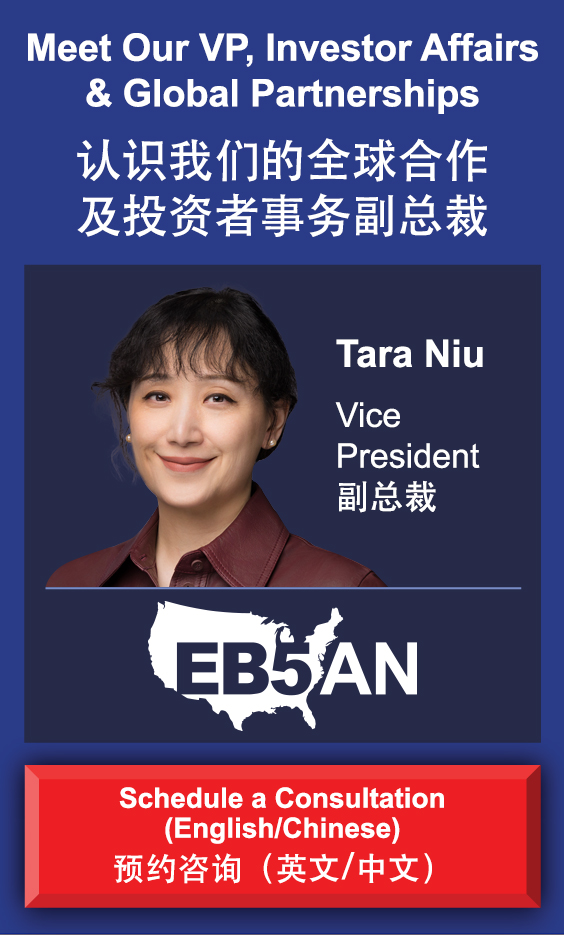The EB-5 Immigrant Investor Program has long been considered one of the most flexible routes to U.S. permanent residency. But in 2025, thanks to a combination of regulatory updates and processing improvements, EB-5 may now be among the fastest options available, especially for investors who make strategic choices about where and how they invest.
While no immigration process is truly “quick,” recent developments in EB-5 have made early-stage benefits such as work and travel authorization much more accessible, often within just a few months of applying. That said, understanding the full EB-5 timeline, including what happens after your initial petition is filed, is essential to setting realistic expectations.
This article explores the current waiting time for the EB-5 visa in 2025, with a focus on key milestones, visa processing trends, and the role of rural projects in expediting the journey.
Understanding the EB-5 Process
I-526E Petition
The Green Card
What About Backlogs and Retrogression?
Is EB-5 Right for You?
Understanding the EB-5 Process
Before diving into waiting times, it’s important to understand the overall EB-5 journey. In short, EB-5 is a two-step immigration process that starts with an investment and ends with permanent residency (or eventual citizenship).
To qualify, an investor must contribute $800,000 into a U.S. new commercial enterprise located in a targeted employment area (TEA). For projects outside of TEAs, this number is $1,050,000 instead. This investment must ultimately result in the creation of 10 full-time jobs for U.S. workers.
In return, the investor and their immediate family can obtain a two-year conditional Green Card, followed by the opportunity to apply for full permanent residency.
However, there are key milestones along the way, and the timeline to reach each one can vary depending on several factors, including where the investment is made and whether the applicant is already in the U.S.
I-526E Petition
The EB-5 process officially begins with the submission of Form I-526E, the investor petition filed with U.S. Citizenship and Immigration Services (USCIS). This petition confirms that the investor has made a qualifying investment and has sourced their funds legally.
Once filed, USCIS issues a receipt notice that includes the applicant’s priority date, which serves as their place in line for visa allocation.
Faster Processing for Rural Projects
In 2025, USCIS has prioritized petitions associated with rural TEA projects. Investors in these projects are seeing significantly faster adjudications such as 5 months. This is due to both priority processing and the reserved visa set-asides allocated by recent legislation.
Urban TEA projects are still eligible for the $800,000 investment threshold, but do not benefit from priority processing. As a result, I-526E approval timelines for urban investments may take much longer, depending on USCIS workload and petition volume.
Interim Benefits Through Concurrent Filing
One of the most impactful regulatory changes in recent years is the ability to file for adjustment of status concurrently with the I-526E petition, if the investor is already in the U.S. on a valid visa.
With concurrent filing, investors can submit Form I-485 (Adjustment of Status) at the same time as their I-526E petition. This allows them to also apply for:
- Employment Authorization Document (EAD) – granting work permission.
- Advance Parole (AP) – enabling international travel.
Many investors are receiving EAD and AP approvals within weeks, even while their I-526E petition is still pending. This means that EB-5 applicants can legally live, work, and travel freely in the U.S. well before they obtain a Green Card, an especially attractive option for individuals concerned about employment-based visa restrictions or layoffs.
The Green Card
It’s important to distinguish between the initial I-526E approval and the actual issuance of a Green Card. Approval of the I-526E petition does not, by itself, confer permanent residency.
Conditional Green Card
After I-526E approval, the applicant must complete one of two processes:
- Adjustment of status if already in the U.S.
- Consular processing if applying from abroad
Both routes lead to the issuance of a two-year conditional Green Card, which serves as proof of lawful permanent residency during the initial phase. For applicants filing from inside the U.S., the adjustment process typically moves faster than consular processing, which involves submitting Form DS-260, completing a medical exam, and attending an interview at a U.S. embassy or consulate.
Depending on the method and current USCIS or consular processing times, receiving a conditional Green Card can take over a year after I-526E approval. However, EB5AN has helped investors receive Green Cards in as fast as 10 months.
Removing Conditions
The final stage in the EB-5 process is filing Form I-829, the petition to remove conditions on permanent residency. This petition must be submitted within 90 days before the two-year Green Card expires and must prove that:
- The investor’s capital remained at risk.
- The investment project created the required number of jobs.
Once Form I-829 is filed, the investor is allowed to remain in the U.S. and continue working while the petition is adjudicated.
What About Backlogs and Retrogression?
One of the most significant advantages of EB-5 in 2025 is the absence of visa retrogression, especially for investors in rural TEA projects.
Thanks to visa set-asides introduced by the EB-5 Reform and Integrity Act, a portion of EB-5 visas is now reserved each year for certain project types:
- 20% for rural TEA projects.
- 10% for high-unemployment or urban TEAs.
- 2% for infrastructure projects.
As of this writing, none of these reserved categories are experiencing retrogression, even for countries like India or China, which have historically faced multi-year EB-5 visa wait times. This makes the rural track particularly attractive for investors from high-demand countries seeking the fastest possible route.
However, the processing backlogs will eventually begin to appear in the Visa Bulletin—likely resulting in retrogression, particularly for the urban EB-5 category. That’s why this moment represents a key window of opportunity for investors to act. Filing now allows you to lock in an early priority date before potential delays begin to impact new applicants.
Is EB-5 Right for You?
While the full EB-5 journey, from investment to permanent Green Card and citizenship, spans several years, many of the benefits are made available much earlier. Thanks to concurrent filing and interim authorizations, investors can legally live and work in the U.S. within weeks of filing. That’s a major shift from traditional immigration routes, where applicants often wait years just to obtain temporary status.
If you’re seeking a stable, independent route to U.S. residency, with minimal reliance on employers, visas, or lottery systems, EB-5 may be worth serious consideration. With faster timelines, concurrent benefits, and no current backlogs in key visa categories, 2025 offers a window of opportunity for well-prepared investors.
As always, be sure to consult a qualified immigration attorney and take the time to carefully vet any project you’re considering. It’s also wise to work with an experienced EB-5 team that can guide you through the process and help you make well-informed decisions.
EB5AN has helped more than 2,700 families from 70+ countries become lawful permanent residents of the United States. Our expert team has more than a decade of experience and offers clients first-rate, low-risk EB-5 regional center projects with a 100% USCIS project approval rate.
If you would like to know more about your EB-5 investment options, book a free call with our expert team today.











